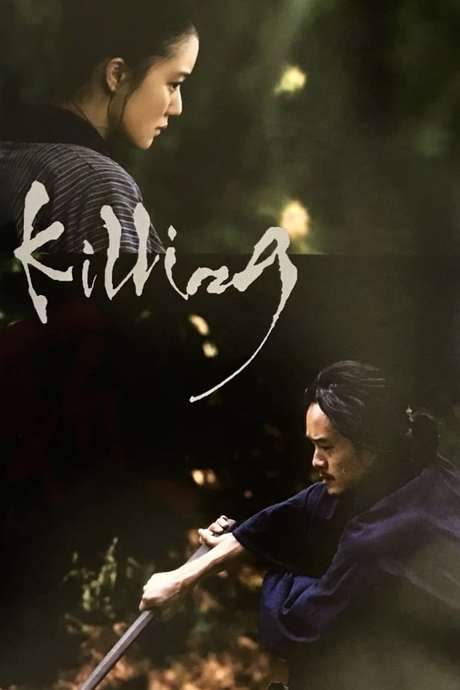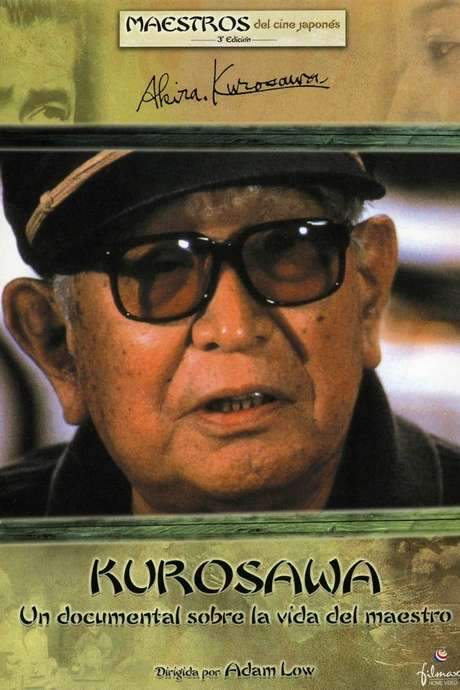
Budo: The Art of Killing
Year: 1979
Runtime: 101 mins
Language: English
Director: Masayoshi Nemoto
Budo: The Art of Killing is an award-winning 1978 Japanese martial-arts documentary created and produced by Hisao Masuda, financed by The Arthur Davis Company. Regarded as a cult classic, it compiles demonstrations by masters Gozo Shioda, Taizaburo Nakamura and Teruo Hayashi. The film features karate, aikido, kendo, sumo, judo and other disciplines.
Warning: spoilers below!
Haven’t seen Budo: The Art of Killing yet? This summary contains major spoilers. Bookmark the page, watch the movie, and come back for the full breakdown. If you're ready, scroll on and relive the story!
Budo: The Art of Killing (1979) – Full Plot Summary & Ending Explained
Read the complete plot breakdown of Budo: The Art of Killing (1979), including all key story events, major twists, and the ending explained in detail. Discover what really happened—and what it all means.
Budo: The Art of Killing is a detailed, respectful panorama of modern budō (gendai budō), brought to life through demonstrations by renowned Japanese martial artists from the late 1970s. The film treats its subject with measured reverence, weaving together practical display with a deep appreciation for Budō and the broader tapestry of Japanese culture.
The journey opens with a stark, historical note as Kunishirō Hayashi reenacts seppuku, then swiftly moves into yabusame archery and a glimpse of a samurai cavalry clash. The narrator sets up the enduring link between Budō and its universal symbol—the nihonto—before showing how the sword’s effectiveness is countered by techniques developed by Okinawan farmers. Here, Teruo Hayashi, a Karate-do master, steps in to demonstrate Okinawan weapon techniques, providing a bridge between the sword’s ancient legacy and martial arts practiced on the ground today.
The film continues with a sequence of ground-based training: makiwara training shown by Fujimoto features a striking moment where he hits a locomotive and chops a beer bottle, underscoring the extreme discipline and confidence built through conditioning. The nunchaku is then showcased by Satoru Suzuki, a weapon popularized in modern cinema thanks to figures like Bruce Lee. The narrative carries on to traditional Judo drills—mat rolls, pole-hops, and hip throws finessed with rubber bands stretched around trees—before turning to naginata-do, a budō especially favored among female practitioners in Japan.
[Aikido] is presented by Gozo Shioda, the founder of Yoshinkan Aikido, intercut with serene imagery of leaves drifting into a brook. To emphasize the film’s core message that mind and body are inseparable in Budō, Shioda’s demonstration sits alongside Shinto fire-walking scenes, highlighting the fusion of spiritual discipline with physical art. The narrative then shifts to a harsher, more disciplined side of training in a sumo stable, where rikishi Takamiyama endures grueling practice, providing a stark counterpoint to the more refined arts.
Interspersed are scenes of young people practicing kobudo on the beach, prompting the narrator to discuss how Budō is handed down to younger generations. The film returns to the practical heart of karate with further kata and kumite demonstrations by Teruo Hayashi, reinforcing the idea that rigorous training can be severe and cruel, yet necessary to master a sword’s life-and-death potential.
karate training can be both severe and cruel, yet a sword can take away a life with one swing.
The sword becomes a central thread as the program moves into sword arts: iaido, tameshigiri, and kendo are performed by Shuji Matsushita and Tomoo Koide, while the narrator reflects on the fear that the Japanese sword can instill. The exploration of Zen and Budō follows, with Matsushita experiencing a kyosaku strike during zazen, underscoring the “limitless” bond between Zen Buddhism and martial arts.
A dramatic highlight arrives with Taizaburo Nakamura, who demonstrates a variety of sword cuts, captured in slow motion to reveal the astonishing speed of a single, precise strike. The film then turns to the craft behind the nihonto with Amada Akitsugu, a master swordsmith regarded as a national living treasure, depicting the long, patient process of forging the blade.
Budo: The Art of Killing closes with a contemplative look at Noh theater, as the narrator frames the enduring spirit of Budō within the timeless truths of heaven, earth, and humanity.
As long as the universal truths of heaven, the earth and man remain, the spirit of Budo shall endure.
Last Updated: October 07, 2025 at 08:28
Unlock the Full Story of Budo: The Art of Killing
Don't stop at just watching — explore Budo: The Art of Killing in full detail. From the complete plot summary and scene-by-scene timeline to character breakdowns, thematic analysis, and a deep dive into the ending — every page helps you truly understand what Budo: The Art of Killing is all about. Plus, discover what's next after the movie.
Budo: The Art of Killing Timeline
Track the full timeline of Budo: The Art of Killing with every major event arranged chronologically. Perfect for decoding non-linear storytelling, flashbacks, or parallel narratives with a clear scene-by-scene breakdown.

Similar Movies to Budo: The Art of Killing
Discover movies like Budo: The Art of Killing that share similar genres, themes, and storytelling elements. Whether you’re drawn to the atmosphere, character arcs, or plot structure, these curated recommendations will help you explore more films you’ll love.
Explore More About Movie Budo: The Art of Killing
Budo: The Art of Killing (1979) Scene-by-Scene Movie Timeline
Budo: The Art of Killing (1979) Movie Characters, Themes & Settings
Budo: The Art of Killing (1979) Spoiler-Free Summary & Key Flow
Movies Like Budo: The Art of Killing – Similar Titles You’ll Enjoy
The Art of Self-Defense (2019) Plot Summary & Ending Explained
Killing (2018) Film Overview & Timeline
The Art of Action: Martial Arts in the Movies (2002) Full Movie Breakdown
Kurosawa (2000) Complete Plot Breakdown
Aikido: The Path Beyond Thought (2001) Plot Summary & Ending Explained
The Masseurs (1963) Story Summary & Characters
Cinema of Vengeance (1994) Ending Explained & Film Insights
Top Fighter (1995) Ending Explained & Film Insights
The Killing Machine (1976) Movie Recap & Themes
Kill or Be Killed (1976) Spoiler-Packed Plot Recap
Philosophy Of a Knife (2008) Movie Recap & Themes
Art of War (2009) Spoiler-Packed Plot Recap
The Karate (1974) Full Summary & Key Details
The Warrior Within (1976) Ending Explained & Film Insights
Blood Spilled at Takadanobaba (1937) Full Summary & Key Details

















